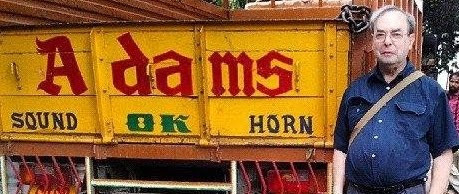Image source:
http://originalpeople.org/in-1810-a-freed-slave-named-tom-molineaux-fought-in-one-of-the-most-important-fights-in-the-history-of-boxing/
Currently,
I am researching the life of my great-grandfather, Franz Ginsberg, who lived
from 1862 until 1936. He migrated from Prussia to the Cape Colony in 1880, and
by the early 1890s he was an important industrialist, making everyday
essentials (such as matches, soap, and candles) in the Eastern Cape town of
King Williams Town. In 1927, after many years in politics - both local and
national, he was elected a member of the Senate of South Africa. To flesh out
the biography that I am writing I have been reading the verbatim reports of the
debates of the South African Senate. These are stored in the British Library.
They contain what the Senators actually said, and therefore they are an ideal
place to get some flavour of what my great-grandfather, who I never met, had to
say.
One
of the debates in which Franz Ginsberg was a participant was about the Entertainments
(Censorship) Bill that was going through the South African Parliament in 1931.
By this time, South Africa was ruled by a coalition Government that was
dominated by the Nationalist Party under Prime Minister JBM Hertzog
(1866-1942), which was elected into power in 1924. It would be somewhat of an
understatement to say that even before South Africa became a Union in 1910, the
non-European population of the country was very much the underdog. The
Nationalist Party did very little to reverse the situation; it would be
accurate to say that they made life for non-Europeans increasingly worse as
time went on.
The
Entertainments (Censorship) Bill, mentioned above was to establish a film
censorship board whose role it was to examine:
“…films and film advertisements intended for
public exhibition in any place in the Union.”
My
great-grandfather was against this Bill because of the contents of some of the
clauses defining what was unacceptable in films to be shown to the people of
South Africa. Some of these reflect the prudishness of the Government of the
times. For example: “the treatment of death”, “nude human figures”, “passionate
love scenes”, & “scenes purporting to illustrate ‘night life’” -
Others
were to protect the public from scenes relating to “controversial or
international politics”, scenes relating to industrial relations, scenes
“disparaging public characters,” and those liable to “create public
alarm”:
There
are a few clauses that are particularly interesting, because they are
harbingers of the apartheid regime that was to afflict South Africa between
1948 and the beginning of the 1990s. These relate depicting interactions
between Europeans and non-Europeans. These clauses forbid the showing of films which: contain “pugilistic encounters
between Europeans and non-Europeans”; and “scenes of intermingling of Europeans
and non-Europeans”:
My
great-grandfather correctly pointed out that clause (o), which forbade showing
“scenes of brutal fighting”, rendered clause (q), which forbade “pugilistic
encounters between Europeans and non-Europeans”, redundant. If brutal fighting
was to be banned, that would include ‘pugilistic encounters’ of any kind, be
they between European and European or between European and non-European. So, logically,
he was correct, but it was a different logic that was being employed by the
Government in 1931 (and later on), the logic of racism.
[Illustrations from the published
Debates of the South African Senate]
For more writing
by Adam Yamey,
please visit:









No comments:
Post a Comment
Useful comments and suggestions are welcome!